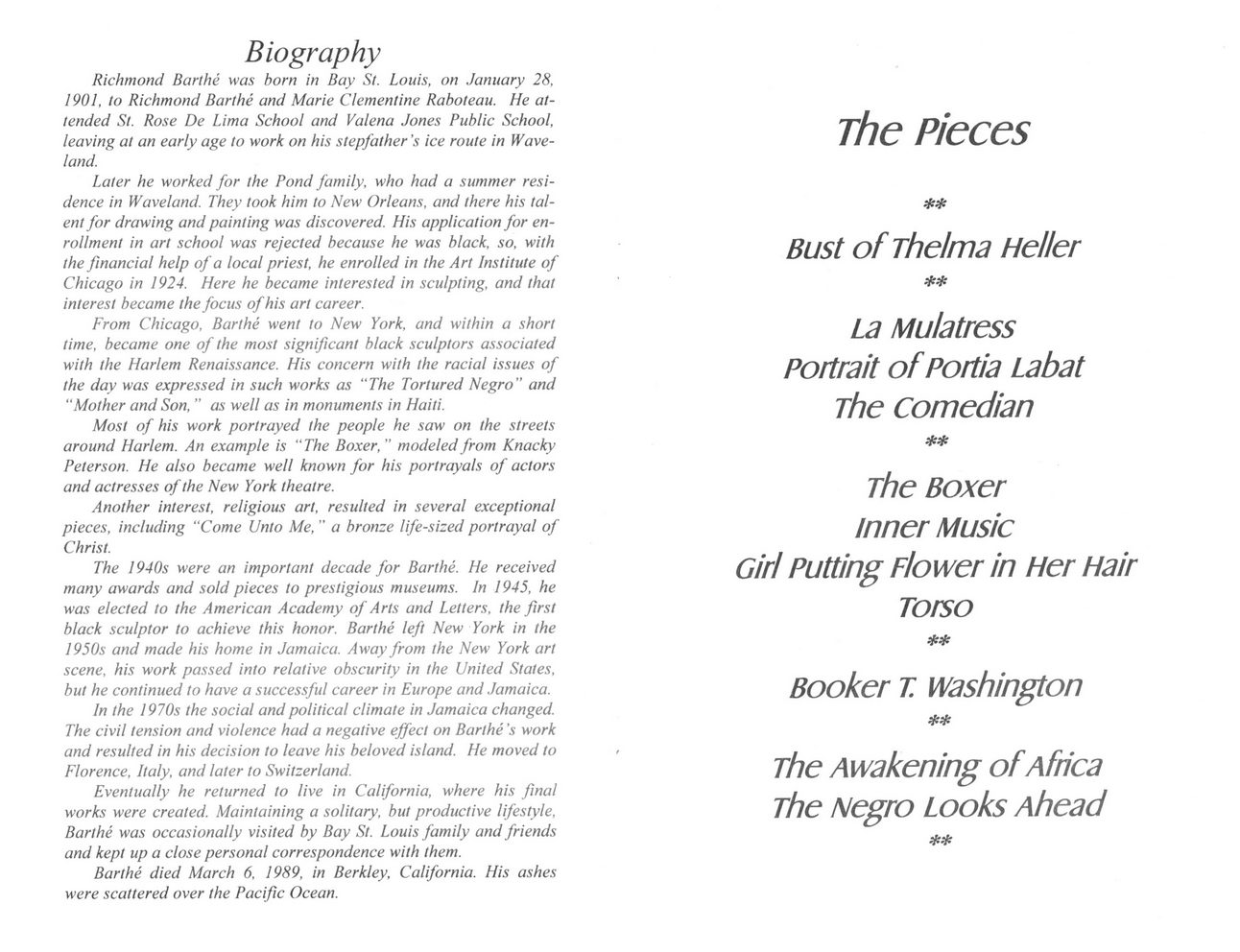This text was obtained via automated optical character recognition.
It has not been edited and may therefore contain several errors.
Biography Richmond Barthe was bom in Bay St. Louis, on January 28, 1901, to Richmond Barthe and Marie Clementine Raboteau. He attended St. Rose De Lima School and Valena Jones Public School, leaving at an early age to work on his stepfather's ice route in Wave-land. Later he worked for the Pond family, who had a summer residence in Waveland. They took him to New Orleans, and there his talent for drawing and painting was discovered. His application for enrollment in art school was rejected because he was black, so, with the financial help of a local priest, he enrolled in the Art Institute of Chicago in 1924. Here he became interested in sculpting, and that interest became the focus of his art career. From Chicago, Barthe went to New York, and within a short time, became one of the most significant black sculptors associated with the Harlem Renaissance. His concern with the racial issues of the day was expressed in such works as ? The Tortured Negro ? and ?Mother and Son, ? as well as in monuments in Haiti. Most of his work portrayed the people he saw on the streets around Harlem. An example is ? The Boxer, ? modeled from Knacky Peterson. He also became well known for his portrayals of actors and actresses of the New York theatre. Another interest, religious art, resulted in several exceptional pieces, including ?Come Unto Me, ? a bronze life-sized portrayal of Christ. The 1940s were an important decade for Barthe. He received many awards and sold pieces to prestigious museums. In 1945, he was elected to the American Academy of Arts and Letters, the first black sculptor to achieve this honor. Barthe left New York in the 1950s and made his home in Jamaica. Away from the New York art scene, his work passed into relative obscurity in the United States, but he continued to have a successful career in Europe and Jamaica. In the 1970s the social and political climate in Jamaica changed. The civil tension and violence had a negative effect on Barthe?s work and resulted in his decision to leave his beloved island. He moved to Florence, Italy, and later to Switzerland. Eventually he returned to live in California, where his final works were created. Maintaining a solitary, but productive lifestyle, Barthe was occasionally visited by Bay St. Louis family and friends and kept up a close personal correspondence with them. Barthe died March 6, 1989, in Berkley, California. His ashes were scattered over the Pacific Ocean. The Pieces ** Bust of Thelma Heller ** La Mulatress Portrait of Portia Labat The comedian ** The Boxer inner Music Girl Putting Flower in Her Hair Torso ** Booker T. Washington ** The Awakening of Africa The Negro Looks Ahead

Barthe, Richmond Program-for-Exhibition-2-3-2001-pg.2-3